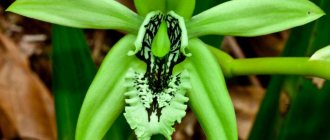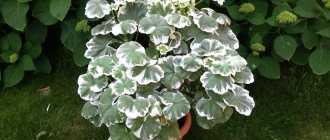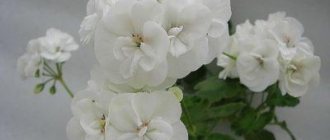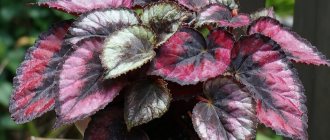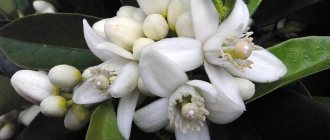Clarkia is an annual shrub from the fireweed family, which is sometimes combined with the genus Godetius. The stems of the plant are branched and reach a length of 0.3-1 m, depending on the species. The lower part becomes lignified by the end of the growing season. Clarkia blooms almost all summer with colorful four-petaled flowers.
This flower crop is very popular among gardeners. Due to its attractiveness, it is successfully used to decorate flower beds, borders, open balconies and other places. Clarkia is easy to care for. It is easy to grow either by seedlings or by sowing seeds directly into open ground.
Features of Clarkia graceful
The culture belongs to the annual flower stalks of the fireweed family. Almost all of its varieties bloom very beautifully and for a long time, pleasing the eye with bright colors.
The height of the bush does not exceed half a meter. The graceful flowers of Clarkia unguiculata are small in size and arranged compactly. The stems are straight and branched, with a hairy edge.
Flowering plant
The leaves are painted bright green with a specific bluish coating. They have an elongated, slightly oval shape, located alternately on the stem. A flower with a diameter of 3-5 cm can be simple or double. Inflorescences with a raceme or spike-like connection come in different shades. Single peduncles are extremely rare. The seeds, enclosed in an elongated capsule, open after full ripening.
Important! The main advantage of the flower is its high resistance to cold. Clarkia requires a lot of light for normal flowering, so when growing it at home, choose windows facing the sunny side.
Terry clarkia flowers seem to peek out from the axils of the upper leaves. From a distance, the flower resembles a miniature hollyhock. Flower growers prefer to grow the plant outdoors, on window sills and balconies. Cut bouquets are used to decorate rooms.
In the wild, clarkia is found in Chile and the western United States. More than 30 plant species are known, but only three are used for ornamental cultivation, from which breeders are developing new varieties. The clarkia flower was brought to Europe from the USA. It got its name from William Clark, who brought it to the Old World in the 19th century.
Diseases and pests
Clarkia can be affected by fungal diseases. Symptoms: the appearance of gray spots with black rims on the leaves and buds. When the first signs appear, treat with fungicides at intervals of 14 days. The cause of diseases may be excess moisture in the root system. Therefore, adjust the watering.
The flea beetle is considered a dangerous pest. Seedlings are most susceptible to attack in the spring. They gnaw out sores on the leaves, causing the seedlings to die. The reason for the mass appearance may be a dry spring.
Control methods: cover seedlings with non-woven material in dry spring. This will retain moisture and prevent pests from getting into the flowers. Remove weeds from the Brassica family.
Fertilizers are also harmful to fleas. Pollinate the seedlings with tobacco dust and ash (1:1). Before the procedure, spray the seedlings with water to ensure a good connection.
Popular varieties
Carnivorous plants - insectivorous flowers at home
The Clarkia graceful flower has many varieties of different colors. The most popular are:
- Albatross. The variety is annual. The height of the stem reaches 75 cm. The shoots are very branched, with white double inflorescences at the ends.
- Purpurkönig. The height of the plant is about 80-90 cm. It blooms in May-June. Rich red, double flowers reach 4 cm in diameter.
- Salmon perfection. One of the tallest shrubs of this species. Its height reaches 1 m. The flowers are pale pink in color. Their diameter does not exceed 3.5 cm.
- Sun. The bush grows in height up to 65–70 cm. The inflorescences of the plant are single, pale salmon in color.
- Orange The bush grows up to 55–65 cm in height. The bright orange flowers attract the attention of others.
- Clarkia Sakura. It has compact double inflorescences of white color with a pinkish tint. The height of the bush reaches 120 cm. During flowering, from afar it seems that the Japanese cherry tree of the same name is blooming.
How to collect seeds
Many summer residents sow clarkia only once. Then it reproduces by self-seeding. After the thickened seedlings appear, all that remains is to thin them out. How to collect seeds from clarkia for growing seedlings and is it possible?
During flowering, choose the most magnificent plant and tie the flowers with gauze. After a month, the boxes acquire a brown color. Now they can be cut. The collected seeds are dried well on a paper napkin and stored.
Clarkia graceful will effectively decorate any garden plot. The variety of shades of this delicate flower allows you to create luxurious compositions. Planting clarkia and subsequently caring for it will not cause any difficulties even for novice gardeners. Fertile soil, timely watering, loosening, as well as favorable weather contribute to the cultivation of a lushly flowering carpet.
What other types of clarkia are cultivated by gardeners?
What a violet looks like - description of the plant
You can also see other representatives of this family in flower beds and gardens. Among them are the following types:
- Clarkia terry. The variety is distinguished by a low stem (up to 65 cm) and huge inflorescences by the standards of the species. They reach 6 cm in diameter. Flowers are collected in a spike.
- Fantasy. The bush reaches 75 cm. The plant is distinguished by lush flowering and different colors of inflorescences.
- Pretty. A very low plant, the height of which barely reaches 30 cm. The inflorescences of this clarkia are double and simple. Flowering begins at the end of May and continues until frost.
- Brevery. This is a fairly new variety. It is resistant to light frosts and reproduces without seedlings. Compact bush with pink flowers.
Types and varieties of clarkia with photos and names
Gardeners cultivate only three types of clarkia, namely: clarkia marigold, or clarkia graceful; pretty clarkia, or pubescent clarkia; Clarkia Brevery.
Clarkia graceful, or marigold (Clarkia unguiculata, Clarkia elegans)
This species can be found in natural conditions in California. A branched, lush annual plant can reach 100 centimeters in height. Thin, fairly powerful shoots from below become lignified. On the surface of the oval greenish-gray leaf blades there are red veins, their edges are unevenly sparsely toothed. The flowers have a regular shape and a four-centimeter diameter. They can be terry or simple and have different colors: red, pink, white, purple and blue. They are placed one at a time in the leaf axils. The germination of small seeds lasts about 4 years. Blooms luxuriantly in July–September. This species is often grown in mid-latitudes. The most popular varieties:
- Albatross. Double flowers are white. The branched bush reaches a height of approximately 0.75 m.
- Purpurkönig. Double flowers have a carmine color and a diameter of 35 to 40 mm. The bush reaches a height of 0.8 to 0.9 m.
- Salmon perfection. The double flowers are salmon pink and have a diameter of approximately 35 mm. The height of the loose bush is about 0.9 m.
Clarkia pulchella
This species is dwarf. Erect branched shoots can reach a height of 0.4 m. Long, narrow, whole leaf plates are green in color. They become pointed towards the top and narrow towards the petiole. Flowers can be double or simple. They can be located either singly or collected in small groups in the leaf axils at the top of the stems. Of particular interest is the shape of the petals, which are divided into 3 lobes, spaced quite widely. In this regard, in America this species is also called “elk antlers.” Flowering begins half a month earlier than the graceful clarkia.
Clarkia breweri
Recently, this species has become increasingly popular among gardeners. This annual cold-resistant plant can reach up to half a meter in height. The shape of the flower is similar to a butterfly, and its diameter reaches approximately 30 mm. The flowers have a pleasant strong smell and are part of loose inflorescences. The Pink Ribbons variety has pink flowers with petals resembling ribbons; the bush can reach a height of about 0.3 m. The shoots of this variety are branched, and it blooms very luxuriantly.
Other types of clarkia grown by gardeners are actually godetia.
CLARKIA
Clarkia: growing from seeds, when to plant seedlings
Gypsophila perennial: creeping, graceful
The plant needs light soil with a high content of minerals. Seeds are sown from mid-March to early April. The procedure should be as follows:
- Prepare containers of shallow depth and loose, fertile soil. The seed of the plant is small, so it should not be buried.
- In order for the seeds to germinate faster, they need to be soaked in water or growth-stimulating compounds in advance.
- Before planting, the seeds are mixed with sand, and the resulting mass is distributed over the surface of the soil.
- The earth is lightly compacted and, after lightly spraying with water, covered with film.
- The container is placed on a well-lit windowsill, but not in direct sunlight.
First shoots
The first shoots will appear on the surface in one and a half to two weeks. Knowing what clarkia seedlings look like, it is not difficult to understand when they will hatch. For normal growth indoors, you need to maintain a temperature of about 20 °C. You also need to monitor the soil moisture and moisten it when it dries out.
Clarkia seedlings are picked after the second leaf appears. This is important because the plant does not respond well to transplantation. For planting, use separate peat cups, which can simply be buried in the soil. The distance between plants should be at least 20-35 cm.
Important! Before planting in open ground, clarkia sprouts are hardened off by taking them out into the open air for a couple of hours.
Clarkia is planted in the garden at the end of May. It is quite resistant to low temperatures and can survive light frosts.
Picking plants
Planting and propagation
Clarkia is not demanding in terms of maintenance and care; planting and propagation does not cause any particular difficulties.
Clarkia seedlings grown from seeds are adapted to cool temperatures and are not afraid of drafts.
The clarkia flower will be bright and the flowering will be long if it is grown on loose, fertile soils. If planted in acidic soil, young plants develop poorly and in most cases die.
The plant is propagated by sowing seeds in open ground directly to a permanent place or to seedlings.
When to plant clarkia?
Grown Clarkia seedlings are planted in late April - early May, when the likelihood of night frosts returning is minimal. The decision to plant clarkia in autumn or spring depends on when you want to get a flowering plant. If the seeds are sown directly into the ground, then sowing is done in the second half of September or in the second half of April.
How to collect seeds?
During flowering, you should notice 3-4 healthy large flowers. After pollination, wilting and at the beginning of the formation of the seed capsule, an isolation procedure is carried out. To do this, tie the fruit tightly, but not tightly, to the stem with a clean gauze tape. During this time, the seed box will ripen, and the gauze will not allow the seeds to scatter, thereby eliminating the possibility of self-seeding.
The seeds ripen completely within 30 days after the flower withers. By the dark brown color of the fruit, you can determine that the seeds are fully ripe. They are cut off, the seeds are taken out, and dried on a flat surface. Matchboxes or paper envelopes work well for storage.
Preparing seeds for sowing
Before planting clarkia, the seeds are soaked for 2.5-3 hours in a weak solution of potassium permanganate. The seeds are wrapped in a napkin, gauze, bandage or cosmetic cotton pad and dipped into the solution. This way they will not float up and will be well soaked. After the soaking procedure, the seeds are laid out on a sheet of paper or on a clean, dry napkin and dried at room temperature. The seeds are ready for sowing.
Sowing seeds in open ground
In prepared soil rich in mineral fertilizers, make shallow grooves 1.5-2 cm deep, at a distance of 4-5 cm from each other. Using paper or a toothpick, the seed is placed in the recesses, sprinkled with earth, and moistened.
It is necessary to cover the crops with a greenhouse, periodically ventilate and moisten the soil as it dries. In 10-14 days the first shoots will appear. Young shoots are not replanted, but thinned out, leaving a distance of 10-15 cm between seedlings. You should not do more, otherwise it will be difficult to get lush and bright flowering from the plants. The greenhouse is removed in early May, when the likelihood of night frosts is very low. In early spring, when sowing clarkia in open ground, young seedlings are not watered, since the soil is sufficiently moistened by melt water.
Seed sowing technology
In the prepared soil, shallow grooves are made at a distance of 1-2 cm from each other. Clarkia seeds are sown in holes and lightly sprinkled with soil. Afterwards it is necessary to moisten the soil. This should be done with extreme caution and precision to avoid the seeds floating out of the ground. Use a spray bottle or a teaspoon. The container with soil is covered with a transparent material (glass, polyethylene) and placed in a well-lit place.
The cover should be removed daily to ventilate and prevent seed rotting. As soon as the first shoots appear, the transparent cover is removed.
What containers are needed for sowing?
Select shallow containers that, before loading the soil, are treated with boiling water and wiped with alcohol or hydrogen peroxide for disinfection. For Clarkia seeds, it is preferable to choose medium or large nurseries. You can use individual cups, but they are not as convenient to work with as wide containers. The seeded containers are left in well-lit places that avoid drafts.
Planting clarkia in open ground
12-14 days before planting a herbaceous plant in open ground, dig up the soil, remove old roots, and apply mineral fertilizers.
The stems of an adult plant branch strongly, as a result of which the distance between plants should be at least 15 cm. If the plants are close to each other, then they need to be thinned out, this will allow the plant to maintain a lush, elegant appearance. Clarkia is planted in the planting holes from pots by transshipment, that is, together with a lump of earth. Do not divide young bushes, otherwise the roots will be damaged and the plant will die. A peg or other support is inserted into the soil next to the bush. To stimulate lush growth and dense branching, bushes are pinched.
Clarkia seedlings
Seeds for seedlings are sown in containers with prepared soil in early March. The flower obtained in this way has better health and is protected from various weather changes. Young shoots develop and grow quite quickly. When 2-3 true leaves form, they are pinched. The seedling method is good for growing clarkia at home in pots. If seedlings are grown for open ground, then transplantation is planned in May.
Growing
The plant can delight with its elegant appearance not only in the garden, but also indoors. Growing clarkia at home will not cause any particular difficulties, although in a potted version it will be more modest in size and with less lush flowering. When growing clarkia at home, you should take care of additional lighting, especially in winter.
If in open ground the seeds germinate late and the bush has not completely flowered, in the fall it is dug up with a large lump of earth, transplanted into a container and grown at home. The bush will not grow year-round even with the best care and maintenance. After the flowers wither, the entire root system gradually dies off.
In spring, seeds are sown in early May. In this case, flowering can be expected in early - mid-July and until mid-September.
In autumn, seeds are sown in open ground in the second half of September; in this case, the seedlings will grow a little, become stronger and overwinter under cover. When planting in autumn, flowering occurs much earlier - in early June.
Clarkia in winter
The plant is quite frost-resistant and easily tolerates the cold season, but for better preservation it is recommended to cover the flower with straw, fallen leaves, and moss after pruning. This manipulation is necessary if the plant remains in the same place. But when a new place for planting clarkia is determined in the spring, the old one is dug up in the fall, all roots and parts of the plant are removed in order to prevent the development of fungal diseases.
Features of planting without seedlings in open ground
The culture requires fertile and light soil. On heavy soil, clarkia, which is not too difficult to plant and care for, will grow poorly.
Before planting the seeds, the bed is fertilized with peat or a mixture of sand and humus. You can grow seedlings in open ground according to the same scheme as at home. The main thing is to correctly distribute the seeds throughout the bed and open them after the first shoots appear.
Note! If clarkia graceful, which begins growing in the fall, germinates before the onset of cold weather, there is no need to worry. They will not freeze out under the snow, but in the spring they will need to be thinned out.
The advantage of such cultivation is that young seedlings are not injured during replanting and therefore begin to bloom several weeks earlier.
Fertilization and watering
Clarkia can easily do without fertilizers, especially if planting was carried out in the special soil mixture described above. But, if you see that the crop is developing slowly or blooming poorly, you may need to feed it. To do this, from the beginning of the rapid growth of shoots and during the formation of buds (but before the start of flowering), complex mineral fertilizing (for example, with the Rainbow preparation) is applied to the soil. Organic fertilizers for feeding Clarkia should be avoided, as this crop reacts poorly to them (Figure 5).
Figure 5. Watering the flower is necessary only during drought
An area with fertilizers and flowers needs watering only occasionally, for example, in dry weather with a long absence of precipitation. The rest of the time, water is not added to the soil, since the flower will only need natural moisture from the ground. If the need for watering does arise, do not try to add a lot of moisture to the soil at once. The liquid should be completely absorbed into the soil and not stagnate on its surface. Otherwise, rotting of the roots or lower parts of the stem may occur.
Features of garden care
The main condition for the normal development and lush flowering of clarkia is regular watering. Usually it is enough to do this twice a week, but on hot days the flower needs to be sprayed more often.
Spraying plants
When setting buds, fertilizing with a complex of minerals is applied to the soil. In summer, the process is repeated every two weeks until flowering stops.
When and how does clarkia bloom?
The flowering period, depending on the species, can last from June until frost. The flower shape can be spicate or racemose. Flowers can be double or simple.
Care after flowering
Caring for the plant after flowering ends involves removing all fading inflorescences so that the bush blooms more luxuriantly and new ovaries appear. It is better to tie tall stems so that they do not break.
Clarkia can reproduce by self-sowing. Home cultivation will become easier if, during flowering, you select the strongest peduncles and monitor the formation of a seed pod on them. To prevent the seeds from falling to the ground when opening, the fruit is wrapped in gauze or bandage and fixed on the stem.
Additional Information. When the boxes turn dark brown, they are cut and dried. The seeds are poured into a separate envelope, signed with the year of collection.
Clarkia tolerates winter quite well, especially if the seeds are planted in the ground in the fall. You can save sprouts from severe frosts by mulching. If the plant is going to be moved indoors, the above-ground part of the bush is cut off and the roots are dug up. This prevents the development of harmful fungal spores in the soil.
Plant care
To obtain a healthy and beautifully flowering plant, you should follow simple rules for care and maintenance. In principle, Clarkia is a rather unpretentious and undemanding plant.
Caring for a plant in open ground
To maintain a decorative and elegant appearance, faded flowers, leaves, and seed pods should be removed. This is necessary to maintain the vitality of the plant during the formation of new flowers. Removing dried flowers promotes longer flowering. Loosening the soil and removing weeds promotes rapid, good growth.
Watering, fertilizing and tying up
In hot weather, without precipitation, when the soil dries out, regular moderate watering is required twice a week. In this case, you should not overwater the plant, otherwise you may cause rotting of the roots. To avoid the latter, plant Clarkia in well-drained soil. Wet soil must be loosened to improve air flow to the roots. In cool, rainy weather, watering is stopped completely. Water strictly under the bush, avoiding water getting on the leaves and flowers, otherwise you can provoke sunburn, which spoils the decorative appearance of the plant.
Fertilizing is applied twice a month - during the period of budding and flowering. Mineral fertilizers are used; organic fertilizer is not used for clarkia. Feeding is mainly necessary in dry, rainy weather. For brighter and more abundant flowering, add ash to the soil.
To prevent breakage of tall stems from strong winds, as well as to avoid bending them, the bush is tied to pegs, which are driven in during planting.
Choosing a landing site
The plant is extremely light-loving, but develops equally well in partial shade. It loves space as it grows quickly. It is necessary to choose a place for the flower that excludes strong winds, otherwise the plant may break. The plant tolerates drafts and short-term spring cooling quite calmly.
Soil: composition and characteristics
The flower develops better on loose, fertile, medium and light density soil. In principle, an unpretentious plant can germinate on dense clay soils, but it will develop more slowly and bloom extremely sparingly. For future seedlings, experienced gardeners prefer to prepare an earthen mixture: they take ordinary soil for seedlings and add rotted humus, peat and river sand to it in equal proportions. To prevent contamination of the soil by various fungal diseases, it is calcined in an oven or steamed in a water bath.
Seedling care
Due to their unpretentious nature, caring for seedlings comes down to maintaining soil moisture, optimal temperature and periodic watering. The soil of the seedlings should not dry out and should not be over-moistened; it should be moderately moist.
Loosening is allowed only for mature seedlings, since young shoots can be damaged.
To prevent root rotting due to stagnant water, you should take care of the drainage system.
A comfortable temperature for a plant is within +20 C. To prevent burns, young plants should be protected from direct sunlight.
Caring for plants during and after flowering
During the growth of the plant, to give the bush a more voluminous and lush appearance, the tops of shoots no more than 10-15 cm high are periodically pinched.
In late autumn, when flowering ends, just before frost, the bush is cut flush to the ground, the soil is dug up, and old roots are removed. Due to the high probability of self-seeding, Clarkia will independently revive in its original place next spring.
Possible problems in growing
The culture is resistant to pest attacks and diseases. However, errors in plant care can provoke the development of fungal and viral diseases.
Plant diseases
If brown spots appear on the leaves, the clarkia is affected by a fungus, and most likely this is a consequence of an excess of moisture or nitrogen fertilizers. To eliminate the problem, fungicides are used, for example, Bordeaux mixture. Her plant is sprayed twice a day.
Important! If affected by pathogenic insects (mealybugs or aphids), the crop must be treated with insecticides.
Midges that appear due to waterlogging lay larvae in the soil, which eat the roots of plants. The only way to save a flower is by transplanting it into another container. To prevent their appearance, the soil in the pot must be loosened periodically. Sulfur is also used in the fight against midges. A few heads of matches stuck into the ground will help rid the clarkia of pests. A weak solution of potassium permanganate is also used for this.
The Californian beauty Clarkia graceful can decorate an area for a long time with its abundant flowering. To get this result, you just need to follow the rules of growing the crop.
When to plant?
The phases of the moon have an impact on the speed of plant growth and development. You cannot plant or sow them on the days of the new moon or full moon.
It is important to take into account the fact that during the waxing phase of the moon the tops of plants develop intensively, so this time is favorable for sowing seeds. When the moon wanes, favorable conditions are created for the development of the root system and the removal of dried parts of the flower (pruning).
In 2022, the following dates will be favorable for sowing clarkia seeds:
- March – 10, 12, 15;
- April - 7, 11, 18;
- May – 9, 10, 15, 17;
- June – 5, 6, 12, 13, 16;
- July – 8, 9, 11, 14, 16.
Favorable conditions for planting, transplanting and picking will be on the following days:
- March - 10, 12, 16;
- April – 7, 11, 18;
- May - 8, 15, 18;
- June – 6, 11, 14, 15;
- July – 8, 10,11,14,15, 16;
- August – 5, 7, 10, 11, 12;
- September – 1, 4, 6,9.
Combinations of Clarkia with other plants
Clarkias will help you create a truly charming flower garden, especially in combination with other plants. Lilies, phlox, asters, and white daisies are great for them. In addition, they look impressive and bright against the background of other low shrubs, such as red roses.
Clarkia in the flower garden
Species and botanical characteristics
The Clarkia genus belongs to the Fireweed family, it is the closest relative of Godetia, having a common homeland and origin with it. The genus is named after the American explorer and traveler who introduced the plant into cultivation.
Clarkia flowers, common in our gardens, are a plant with a herbaceous, partially woody, erect stem from 30 cm to 1 meter in height by the end of the growing season. Thanks to its good branching, it forms a lush bush. The leaves are bluish-green, the flowers are medium-sized (ø3.5–4 cm) collected at the top in a raceme or a sparse spike. The predominant color scheme is pink-lilac, but there are varieties with white and purple colors.
A sunny area in the garden is the only mandatory requirement in summer gardening. Otherwise, it is quite unpretentious - it likes soil that is not too fertilized, with a slightly acidic reaction, it gets by with rain moisture, and is resistant to spring frosts.
This is interesting! Godetia seeds can often be found under the name clarkia. The distinctive features of godetia are a creeping stem, satin flowers similar to azalea, and racemose inflorescences.
Description of the flower
The flower grows no more than 85-95 cm. The shoots with this growth are erect, very branched due to the formation of new stems from the lateral axils. Slight pubescence is often observed on the shoots. The edge has small fine fibers. The leaves are green, with a bluish tint. They are located alternately on the shoot. The shape of each leaf is a slightly elongated oval.
Flowers are formed from the axils of the leaves, which can be either simple or double. When opened, each flower is up to 3-4 cm in diameter. The petals have a very different color: from snow-white to burgundy shades. The inflorescence is formed mainly at the top of the shoot. The flower consists of a tubular calyx and four-lobed petals, of which there can be four or three on one flower.
If the clarkia is double, then there are many such petals. When flowering, the aroma spreads throughout the area, attracting insects for pollination. As a result of pollination, very small seeds are formed, located in a capsule.
After planting the seeds, the plant will bloom in two months. Typically flowering lasts one and a half to two months.



